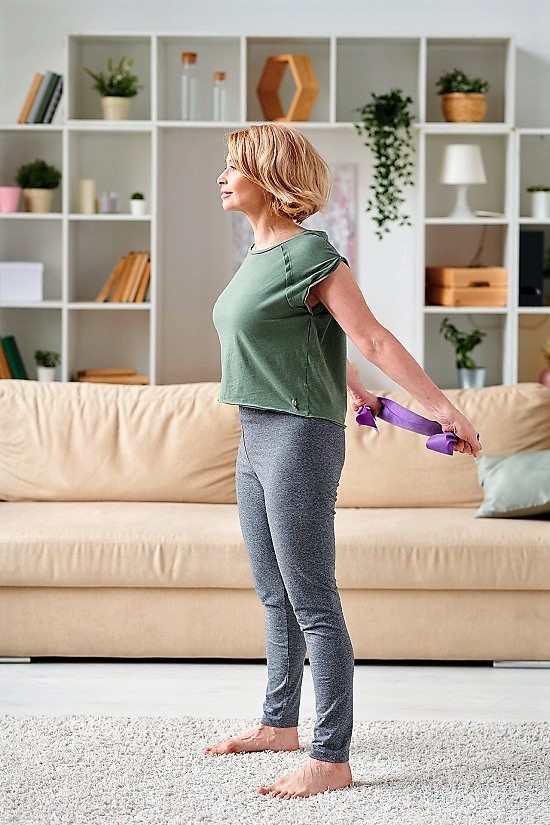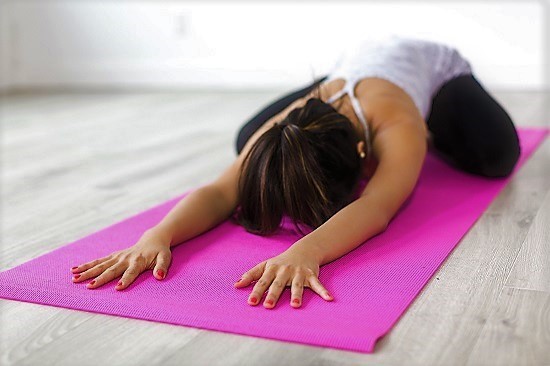The importance of physical exercise can never be emphasized
enough, as it is an integral part of overall health. The
Centers for DiseaseControl and Prevention (CDC) and the
American College of Sports Medicine (ACSM)
recommend that adults practice at least 150 minutes of moderate aerobic
activity per week, as well as muscle-strengthening activities twice a week or
more to work all major muscle groups.
اضافة اعلان
Physical activity helps prevent many diseases and can also
help manage preexisting conditions, such as diabetes. Nevertheless, there is
another form of physical activity that should hold as much importance as
exercise, but unfortunately does not. Current recommendations from the ACSM
suggest stretching a minimum of 2-3 times per week, although daily stretching
is most effective.
 Importance of stretching
Importance of stretching
One of the best analogies to describe the muscles is to
compare them to a balloon. When you start to blow up a balloon, it may be
difficult at first because the balloon is still rigid and accustomed to its
smaller size. However, if you give a balloon a couple of stretches before
inflating, you will notice that it inflates much more readily, and it is also
less likely to pop.
Muscles work in a similar fashion. During periods of
inactivity, such as sitting or sleeping, the muscles in our body shorten and,
as a result, tighten and become more rigid. When the time comes to use the
muscles for even simple tasks such as walking, they are comparatively weaker
and unable to extend to their full potential. This carries the risk of joint
pain, strains, and even muscle damage. The risk is even greater for those who
perform more strenuous activities such as weightlifting. As such, regular
stretching helps keep muscles long, lean, and flexible, which can drastically
reduce these associated risks.
The core principle of stretching works on the
physiology of
the muscle. Muscles have a myotatic reflex, which is the contraction of a
muscle in response to its passive stretching. When the muscle lengthens,
components of the muscles recognize the stretching and work to resist it. In
moments of strenuous activity, this resistance may result in muscle damage.
This reflex is an entirely involuntary response and is one of the chief
mechanisms responsible for muscle stiffness.

By routinely stretching, the stretch reflex can be delayed,
which will improve overall flexibility and reduce the risk of muscle damage.
Essentials of stretching
There are many forms of stretching, but all have common
essential foundations that one must be mindful of. One important essential is
that stretching should not be considered a warm-up.
Referring to the balloon analogy, stretching while it is
cold can increase the risk of it snapping.
Muscles that are “cold” run the same
risk, but that comes in the form of muscle tears.
A proper warm-up would be a brisk walk or light jog for 5-10
minutes. This will improve the flow of blood to the muscles and effectively
prepare them to be stretched. Symmetry and focusing on the major muscle groups
is also essential to avoiding injury.
Ensuring that the left and right side of your body are
equally flexible reduces the risk of injury. Similarly, routine stretching of
muscles and joints of major muscle groups, such as calves, thighs, hips, lower
back, neck, and shoulders, reduces the risk of injury during daily activities.
Finally, pain should be well understood. Stretching,
especially the first few times, may be discomforting, but it should not be
painful. If you begin to experience pain deep into a stretch, ease off the
stretch until there is no more pain and hold the stretch.
Forms of stretching
Each type of stretching serves a unique purpose and when
working out, a combination of stretches can be used to best serve your needs.
The two most common and important forms of stretching are static and dynamic.
As the name implies, static stretches are performed in a stationary position,
stretching a joint as far as comfortably possible and holding for 30-90
seconds. For many years, static stretching was the main form of stretching and
was commonly used to warm-up. Recently, however, studies have shown that those
participating in sports or anticipating strenuous activity should avoid static stretches
as a warm-up as surfacing evidence shows that a single bout of static
stretches has the potential to reduce maximal strength, power, and performance. As a
result, dynamic stretches have become the preferred warm-up stretch.
Dynamic stretching is the process of actively moving joints
and muscles in sport-specific motions for 10-12 repetitions. The purpose of
dynamic stretches is to prepare the muscles for the range of motion that is
anticipated from the workout or activity. This preparation increases blood flow
and flexibility while reducing resistance, all of which has been shown to
temporarily increase power, sprint, jump and overall performance.
Despite the recent popularity of dynamic stretching, static
stretches still serve an important role in workouts. Static stretching after
exercise may help reduce post-workout stiffness as it helps return muscles to
their pre-workout lengths. Those who participate in sports or work out at the
gym should warm up with dynamic stretches and perform static stretches as a
part of the cooling down process.

There are many other forms of stretching although their use
is questionable and often requires supervision. Active isolated stretching is
similar to static stretching, with the exception that the stretches focus on
specific muscles and requires the used of additional force. The additional
force may come in the form of a rope or hands which are stretched until tension
is felt and held for 1-2 seconds. The major concern regarding this stretch is
overstretching, especially when done with a rope.
Another form of stretching is proprioceptive neuromuscular
facilitation stretching, which is effective but may be dangerous if done
incorrectly. The stretch involves contracting the muscle, releasing and then
immediately stretching, typically with the assistance of a person. Due to the
risk involved in this stretch, it is recommended that it only be done under the
supervision of a
physical therapist or trainer.
The final common form of stretching is ballistic stretching.
It is outdated and has largely fallen out of favor, however. Ballistic
stretching involves slowly moving into the stretch and once tension is felt,
bounce or rock on the stretch to move past the point of the original stretch.
This stretch is no longer recommended due to the danger associated with
applying excess pressure on the muscle and connective tissues.
Benefits of stretches
Stretching serves a wide variety of purposes and benefits
not only those who exercise, but also those who incorporate them into morning
or nightly routines.
Stretching improves flexibility and range of motion, which
in turn reduces pain and stiffness. Additionally, stretching improves
blood flow and circulation, which, combined with increased flexibility, will enhance
overall performance. Finally, stretching can be used to treat symptoms of
stress and stress itself. When under high levels of stress, muscles will begin
to tense and stretching will help alleviate the tension. When combined with
mindful breathing exercise, stretching can also help reduce mental tension and
anxiety.
Read more Health



